Exploring Borneo’s Lost World: The Maliau Basin
Sam Bedford goes on a guided, tailor-made trek to the top of Mount Lotung, the highest peak of the Maliau Basin in Malaysian Borneo.
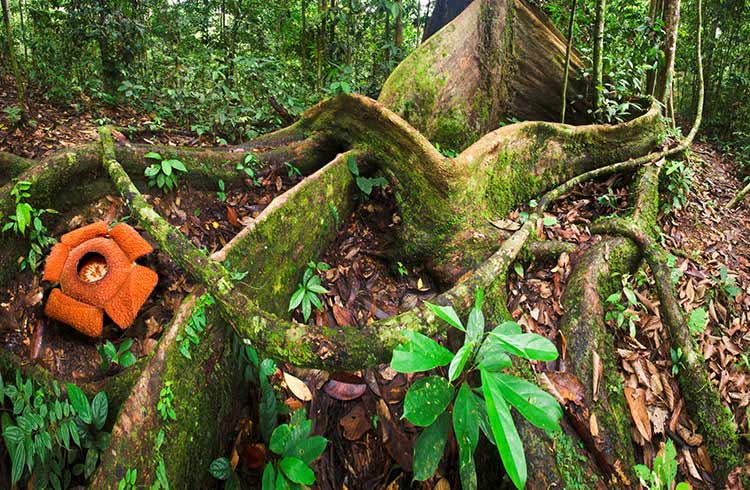 Photo © Getty Images/SuperStock
Photo © Getty Images/SuperStock
Borneo’s Maliau Basin is among the least explored regions on Earth, making this far-flung conservation area very appealing on a planet that’s never been more accessible.
Maliau Basin
I arrive in Tawau, East Sabah, after an hour’s flight from Kota Kinabalu. A bumpy six-hour drive delivers me to Maliau Basin, a protected reserve more than twice the size of Kuala Lumpur. My three-day trek, covering approximately 13mi (21km) in Maliau Basin begins. As part of an ecological research team, I have the privilege of hiking Mount Lotung which stands at 5,469ft (1,667m) above sea level.
The best way to visualize Maliau Basin is to imagine an abandoned amphitheater for giants that the jungle reclaimed millions of years ago. Barely any sunshine reaches the ground under the thick, entangled canopy.
Mike, my local Sabahan guide in his early 40s, tells me more than 2,000 species of animals and plants, many found only in Borneo, live here. Almost extinct Sumatran rhinos and critically endangered orangutans thrive inside some of the 12 forest zones. As do pygmy elephants, ox-like Banteng declared extinct in Peninsular Malaysia and Sambar deer.
Dense forest along the basin’s top forms a barrier like the Darien Gap between Panama and Colombia. It’s difficult for wildlife and people to get in and out, creating a self-contained eco-system developed like the Galapagos Islands which inspired Darwin. The same natural fence kept humans out, too. A handful of semi-nomadic Murut, the fiercest of Borneo’s infamous former headhunters, lived (and still live) along the northern slope. But the hunter-gathers only occasionally ventured inside for food. The dark, foreboding forest proved too much for these pagan tribes. As I slipped and fell on the muddy trails surrounded by spooky shapes and eerie noises, I understand why.
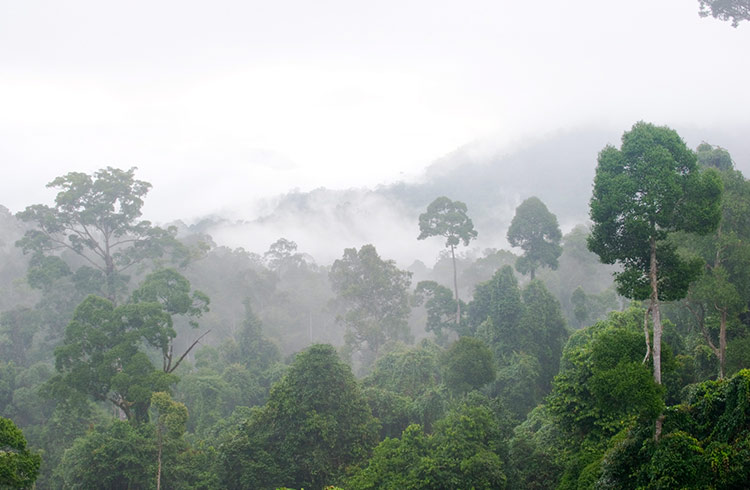
Hiking the basin
I spend my first night at Maliau Basin Studies Centre in an eco-friendly chalet. Hot, sticky air tainted with the sweet jungle aroma makes it difficult to breathe. Billions of insects buzz beyond the black threshold of the encircling dipterocarp forest. Sitting in the middle of the Bornean jungle, I’m half a day from the nearest supermarket.
I wake in a pool of sweat to a rustling sound. As I open the door, the rustling becomes a guttural grunt. Six feet below my balcony, I see half a dozen bearded pigs staring back. We hold each others’ gaze for a second before they go back to rooting for whatever jungle pigs forage for.
Mike and I enter the steam room-like jungle just after sunrise. He has an extraordinary ability to recognize almost every sound and identify every flower. Perhaps it’s his 20 years as an ecologist and guide that has transformed him into a walking encyclopedia.
The eight-hour hike to the top of Mount Lotung isn’t easy. Immediately, the muddy path gets steep. I step over sprawling tree roots and pull myself up using ropes and aluminum ladders crudely attached to the rock face. The occasional downpours and stifling heat makes trekking slow and arduous.
The terrain slowly changes as we climb higher. Tropical vegetation becomes a lower montane forest (a fancy name for mountain ecosystems) around 3,000ft (900m). Rising higher, the sights, smells and sounds change. Even the constant barrage of hoo hoo hooing Bornean gibbons seems far away now. I’m feeling more remote with each step. Sadly, the leeches still attack.
At 3,300ft (1,006m), the forest thins. Sunlight now penetrates the canopy and I see more than just the chocolate-brown trail ahead. Gaps in the tree line give views into the misty basin far below.
Inverted bell-shaped plants, each banded with greens, golds or reds, appear in the trees. These are pitcher plants, some of Earth’s weirdest lifeforms. Rather than photosynthesis, they eat bugs. Mike explains the larger ones can devour small mammals that get trapped inside their sticky cavities. At one rest station near the top, I count thirteen. One is as long as my arm.
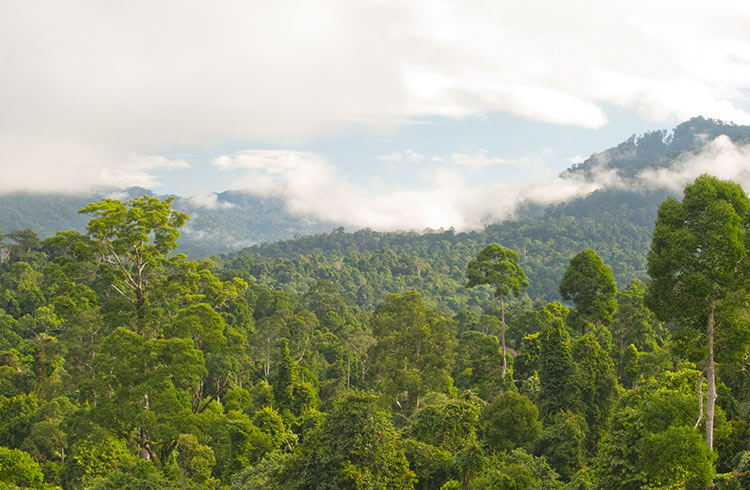
Reaching the top of Mount Lotung
Eight hours of humidity and leeches later, I reach Nepenthes Camp, a hostel named after the scientific term for tropical pitcher plants. Handmade plaques from previous visitors decorate the hut’s ground floor wall.
Equatorial dusk becomes inky darkness in a blink of an eye as I eat barbequed chicken wings and chatted with Mike and Sabinus, the hostel’s caretaker. In the night, Mike wakes me to see three wide-eyed civets, a mix between a cat, leopard and a fox. I stand and watch, frozen in awe.
The next morning, the sun rises above a cloudless sky bathing the camp in orange-red light. Mike suggests climbing the 110ft (34m) observation tower. He explains between 70 and 90% of the jungle’s wildlife live in the treetops.
A precarious climb on heavy limbs reveals a patchwork blanket of shaded green as far as I can see. Mist starts its transformation into puffy clouds in the basin below. Apart from the hut, this landscape looks the same now as it did when the dinosaurs ruled. But the real privilege is knowing that only a handful of humans have ever seen this forest, this natural time capsule, the lungs of Borneo and the world.
Trip notes
Trail information
Maliau Basin has about 44mi (70km) of trails to waterfalls, Linumunsut Lake and the meandering Maliau River. Other paths go to Mount Lotung (the basin’s highest known point) and rare Rafflesia flowers. Tour groups usually hike the basin, visit waterfalls and sleep in basic camps.
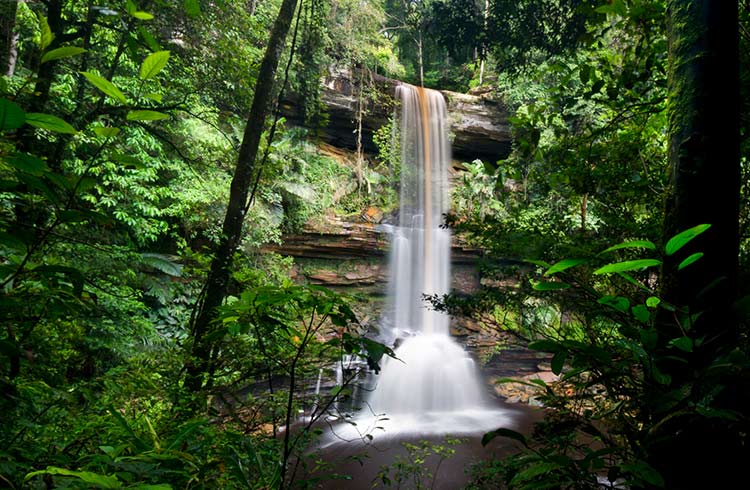
What to pack
Quick dry clothing, a waterproof backpack (for electronics) and leech socks are essentials. Bring rehydration tablets and antiseptic for wounds which can quickly turn infectious in the tropics. Have insect repellent, sturdy walking boots and portable chargers for your camera. There are no toilets in the jungle – bring toilet paper and hand sanitizer, just in case.
How to book
My trip was tailor-made. But tour companies offer a similar three to five-day expedition on a circular route around Maliau Basin. The only way is to join a tour from either Kota Kinabalu or Tawau. Expect all-day strenuous hikes in hot, sticky and wet conditions. You’ll need a fitness certificate from a doctor and travel insurance covering helicopter evacuation before joining. Accommodation is basic (think hostel and camping-style) with squat toilets.
When to go
The best time is between January and July (the ‘dry season’). April and May are usually the driest. Avoid the wettest months between August and December.
Related articles
Simple and flexible travel insurance
You can buy at home or while traveling, and claim online from anywhere in the world. With 150+ adventure activities covered and 24/7 emergency assistance.
Get a quote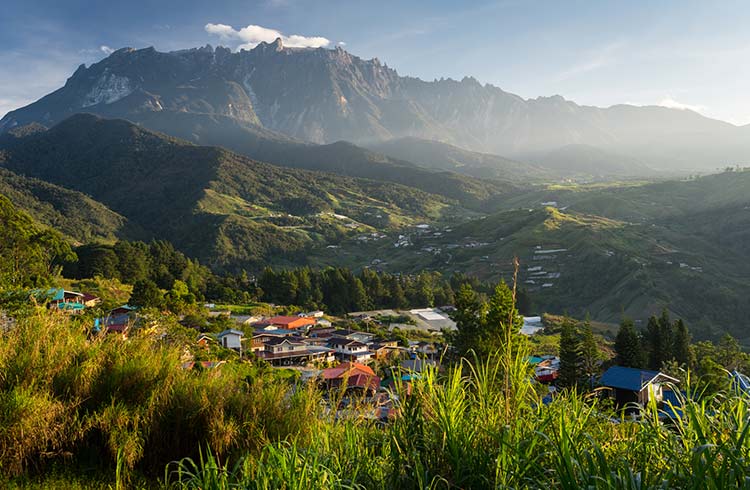
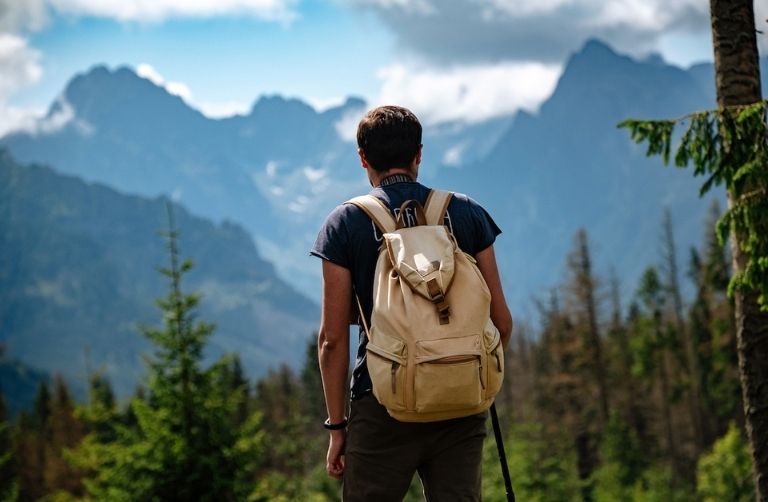
No Comments